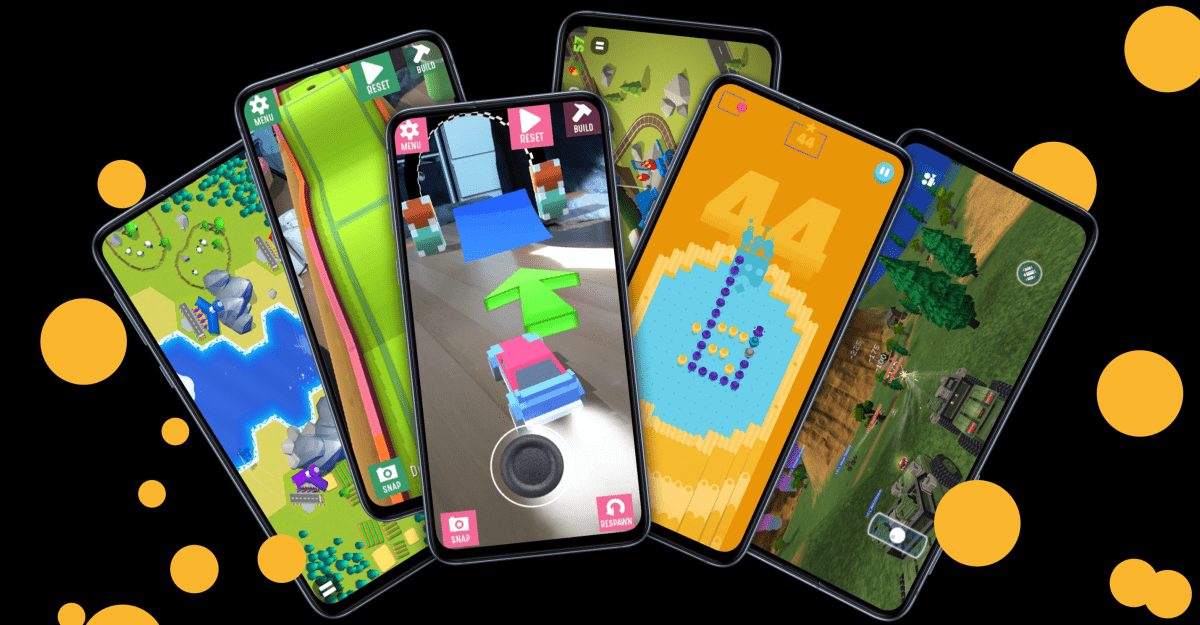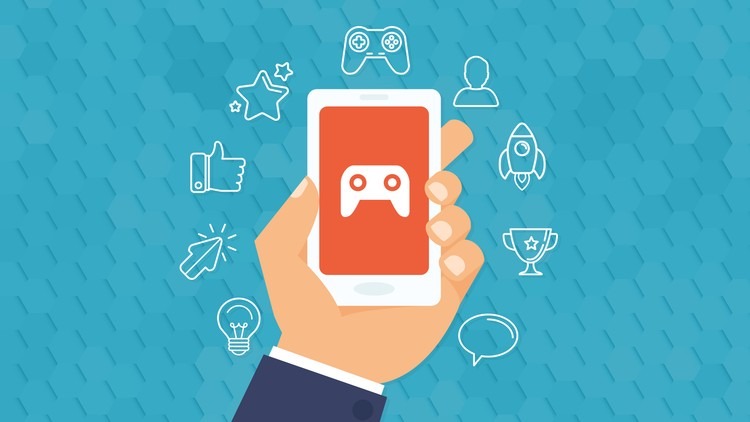Introduction

The mobile gaming industry has exploded over the past decade, evolving from simple time-wasters to immersive experiences that rival traditional console and PC games. According to a recent report, the global mobile gaming market is projected to reach a staggering $165 billion by 2025, driven by advancements in technology and the growing number of smartphone users worldwide.
In this highly competitive landscape, monetization is the lifeblood of mobile games. Developers are constantly seeking innovative ways to generate revenue while keeping their player base engaged and satisfied. The challenge lies in finding the sweet spot between making money and providing an enjoyable gaming experience. Too many ads or pushy in-app purchases can frustrate users, while too little can leave developers struggling to keep the lights on.
The key to successful monetization is striking a balance between user experience and revenue generation. By carefully integrating monetization strategies, such as freemium models, ad-supported content, and in-app purchases, developers can create a win-win scenario where players feel valued and developers reap the financial rewards. For an in-depth look at how different monetization models work, check out this comprehensive guide on mobile game monetization strategies.
Understanding the Market

Current Market Trends and Statistics
The mobile gaming market is continuously evolving, with new trends emerging each year. As of 2023, hyper-casual games are at the forefront, known for their simplicity and broad appeal. These games often use ad-supported models, making them highly profitable. Another significant trend is the rise of multiplayer online games like PUBG Mobile and Call of Duty: Mobile, which capitalize on in-app purchases and subscription models. Technological advancements such as 5G and cloud gaming are also transforming the industry, enabling more complex and graphically intensive games to run smoothly on mobile devices. For a deeper dive into how technology is shaping mobile gaming, check out this insightful article on the impact of 5G on mobile games.
Key Demographics and Target Audiences
Understanding mobile gaming demographics is crucial for effective monetization. Players aged 18-34 are a significant portion of the market and are often willing to spend money on in-app purchases and premium content. The gender distribution is relatively balanced, with a slight tilt towards female players in genres like puzzle and casual games. Geographically, Asia-Pacific remains the largest market, driven by countries like China, Japan, and South Korea, while North America and Europe also have substantial markets with high spending power. Tailoring your game to your target audience’s preferences can significantly boost your monetization efforts. For more insights, explore this detailed demographic report on mobile gamers.
Popular Genres and Their Monetization Potential
Different game genres have varying monetization potentials based on their audience and gameplay mechanics. Here are some of the most popular genres and their monetization strategies:
- Hyper-Casual Games: Characterized by simple mechanics and short session lengths, these games typically rely on ad-supported models, generating revenue from interstitial ads, banner ads, and rewarded videos.
- Puzzle Games: With broad appeal and a diverse audience, puzzle games often use in-app purchases for hints, extra lives, and cosmetic items as their primary monetization strategy.
- Role-Playing Games (RPGs): RPGs usually have a dedicated player base and can monetize through in-app purchases (e.g., virtual currency, gear, and skins) and subscription models offering exclusive content.
- Multiplayer Online Battle Arena (MOBA) Games: Games like Mobile Legends monetize primarily through in-app purchases, offering characters, skins, and enhancements to improve gameplay.
- Sports and Simulation Games: These genres appeal to fans of real-world sports and activities, with monetization including in-app purchases for better equipment, special abilities, and cosmetic upgrades.
By understanding market trends, demographics, and the monetization potential of different genres, developers can craft strategies that maximize revenue while delivering an engaging player experience. For more details on genre-specific monetization, explore this genre analysis of mobile game monetization.
Monetization Models
Freemium Model
The freemium model allows users to download and play the game for free while offering optional in-app purchases for premium features, virtual goods, or other enhancements. Popular examples include Candy Crush Saga and Clash of Clans.
Pros:
- Large user base due to free access
- Potential for high revenue from engaged players
- Flexibility in offering various purchase options
Cons:
- Can be challenging to convert free users to paying customers
- Risk of alienating players if purchases are perceived as necessary for progress
Ad-Supported Model
The ad-supported model generates revenue through advertisements displayed within the game. There are several types of ads used in this model:
- Banner Ads: Displayed at the top or bottom of the screen without interrupting gameplay.
- Interstitial Ads: Full-screen ads shown at natural breaks or transition points in the game.
- Rewarded Videos: Players watch a video ad in exchange for in-game rewards or benefits.
Integration Strategies:
- Carefully timing ad displays to avoid disrupting the user experience
- Offering rewards for watching ads to incentivize players
- Balancing ad frequency to maximize revenue without annoying players
In-App Purchases (IAP)

In-app purchases are a popular monetization strategy where players buy virtual goods or currency within the game. Examples include purchasing extra lives, exclusive characters, or cosmetic items.
Virtual Goods and Currency:
- Players can buy items that enhance gameplay or provide a competitive edge.
- Virtual currency allows for microtransactions, making it easier for players to spend money incrementally.
Subscription Services:
- Offering subscription models for ongoing benefits, such as exclusive content, regular in-game currency, or special privileges.
Paid Apps
In the paid app model, users pay a one-time fee to download and access the game. This model is less common today but can still be effective for certain types of games.
Upfront Costs vs. Long-Term Revenue:
- Upfront payment ensures immediate revenue from each user.
- Long-term revenue can be limited compared to models with ongoing purchases.
Case Studies of Successful Paid Apps:
- Minecraft: A one-time purchase game that continues to generate significant revenue through its strong brand and regular updates.
- Monument Valley: Known for its beautiful design and engaging puzzles, this paid app has achieved critical and commercial success.
Designing for Monetization
Integrating Monetization Without Disrupting Gameplay
Effective monetization requires seamlessly integrating revenue strategies into the game without compromising the user experience. Here are a few tips:
- Natural Placement: Ensure that ads, in-app purchase prompts, and other monetization elements are placed at natural break points in the game, such as between levels or after a user achieves a milestone. This minimizes disruption and keeps players engaged.
- Voluntary Participation: Offer players the choice to engage with monetization features, like watching rewarded ads for extra lives or purchasing optional upgrades. This approach respects the player’s experience and can increase the likelihood of participation.
- Subtle Integration: Incorporate monetization elements in a way that feels organic to the game’s design and storyline. For instance, in a role-playing game, offering exclusive items in a shop that players naturally encounter can enhance immersion.

User Interface and User Experience Considerations
A well-designed user interface (UI) and user experience (UX) can significantly enhance the effectiveness of your monetization strategy:
- Clear and Intuitive UI: Ensure that the UI is easy to navigate and understand. Buttons for in-app purchases, ads, and other monetization elements should be clearly labeled and visually distinct.
- Minimal Intrusiveness: Design monetization elements to be unobtrusive. For example, use non-intrusive banner ads that don’t cover essential game elements, or offer optional pop-ups that players can easily dismiss.
- Rewarding Engagement: Make sure that the rewards for engaging with monetization elements are clear and valuable to the player. This can increase the perceived value and encourage more participation.
Psychological Principles Behind Effective Monetization
Leveraging psychological principles can enhance the effectiveness of your monetization strategy:
- Scarcity: Limited-time offers and exclusive items can create a sense of urgency, encouraging players to make purchases.
- Social Proof: Showcasing popular items or in-app purchases that other players have bought can influence more players to follow suit.
- Endowment Effect: Allow players to experience the benefits of premium features temporarily. Once they perceive ownership or attachment, they may be more willing to purchase the full version.
- Loss Aversion: Design scenarios where players have something to lose if they don’t make a purchase, such as missing out on an event or losing progress.
Case Studies of Successful Monetization Designs
Examining successful case studies can provide valuable insights into effective monetization designs:
- Fortnite: This game excels at integrating monetization without disrupting gameplay by offering cosmetic items that do not impact gameplay balance. Players can purchase skins, emotes, and other items that enhance the visual and social experience.
- Clash of Clans: This game uses a combination of in-app purchases and ad-supported models. Players can buy gems to speed up progress or unlock special features. The game also occasionally offers rewarded ads that players can watch for in-game rewards, keeping the experience engaging.
- Pokémon GO: This game effectively integrates monetization through in-app purchases of items that enhance gameplay, such as Poké Balls and incubators. Events and seasonal updates often include limited-time offers that create a sense of urgency.
